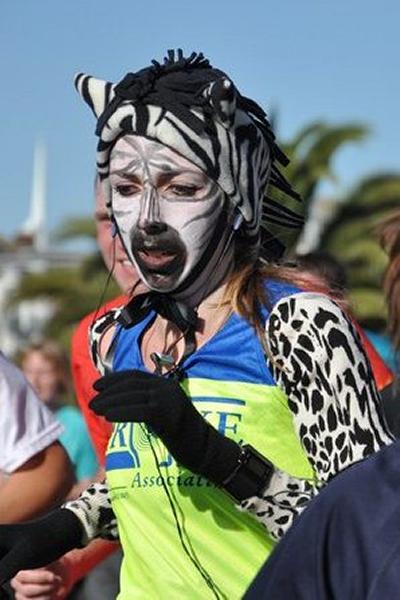Clare Lyons-Amos MSc Social Statistics
Public Health Information Specialist

Following my first degree, I wanted to pursue further training in research methods. I saw the MSc Social Statistics as an excellent opportunity to expand my knowledge of the social sciences to include demography and epidemiology. The picture shows me doing the 2010 Great South Run (a 10 mile road race held in Portsmouth); running to raise money for the Stroke Association.
Q: Why did you choose to undertake your studies at the University of Southampton?
Having chosen to study and thoroughly enjoying BSc Economics and Finance at the University of Southampton, and given that I was aware that the University was very strong in social research through its excellent research and teaching ratings and the ESRC-accredited S3RI, I felt that Southampton was the ideal place to continue my research training.
Q: What was the masters course like?
The quality of teaching is evident. Lecturers are very experienced and respected members of the research community and this is reflected in the quality of teaching and the support given to students. I found the choice of units available allowed me to explore areas of personal interest, for example I was able to combine the core competencies with units in epidemiology and survival analysis to gain insight into how statistics are applied to medicine and public health. In undertaking the dissertation, I was extremely fortunate to be able to work with Professor Máire Ní Bhrolcháin, an excellent academic and supportive mentor, for whom I hold a great deal of regard.
Q: What do you feel you achieved as a result of studying at the University of Southampton?
I currently work for NHS West Sussex as a public health information specialist. The MSc made it possible to apply for the position due to the relevance of subject matter covered. In my day-to-day role I use elements from demographic methods, and standardised rates (direct and indirect) and life tables. I also apply the theory of questionnaire design to generate both quantitative and qualitative data in the evaluation of the effectiveness and impact of interventions, employing the skills and techniques of both the quantitative (survey design methodology) and the qualitative methods teaching in the analysis of the results.